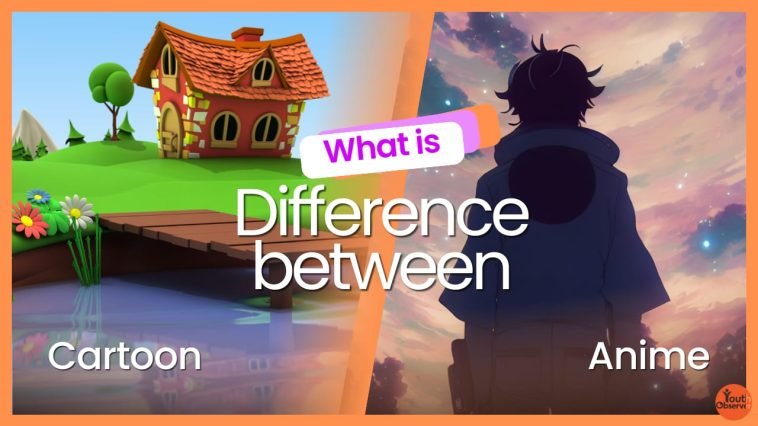When we talk about animated shows, two terms often pop up: anime and cartoons. But what exactly is the difference between them? Anime and cartoons may seem similar at first glance, but they have distinct characteristics that set them apart. By understanding these differences, we can appreciate the unique styles and cultural influences of each form of animation.
Animation captivates audiences around the world, bringing stories to life in vibrant and imaginative ways. While often viewed interchangeably, “anime” and “cartoons” represent distinct styles and storytelling approaches. Buckle up, animation enthusiasts, as we delve into the key differences between these two art forms:
Learn About The Origins and Influences
- Anime: Born in Japan, anime draws inspiration from Japanese manga comics, mythology, and folklore.
- Cartoons: Primarily originating in the West, cartoons draw influences from various sources, including fairy tales, slapstick humor, and pop culture.
Difference Between Art Style and Design Of Anime & Cartoons
- Anime: Often features exaggerated features like large eyes, expressive hair, and stylized clothing. Character designs vary across genres, from whimsical to realistic.
- Cartoons: Can range from simplistic, exaggerated styles to more detailed and realistic art. Character designs often emphasize physical characteristics for comedic effect.
Storytelling and Themes: Difference Between Anime & Cartoons
- Anime: Explores diverse themes, including action, adventure, romance, drama, and psychological complexity. Can cater to various age groups and offer mature content.
- Cartoons: Traditionally aimed at younger audiences, with lighthearted themes and comedic elements. However, modern cartoons can explore deeper themes and cater to broader demographics.
Production and Animation Techniques: Anime VS Cartoons
- Anime: Often uses a combination of traditional hand-drawn animation and digital techniques. Production values can vary significantly depending on budget and genre.
- Cartoons: Utilize various animation techniques, including traditional, digital, and computer-generated imagery (CGI). Production values typically cater to a wider audience appeal.
How These 2 Make a Cultural Impact
- Anime: Enjoys global popularity, influencing fashion, music, and animation across cultures. Often celebrates Japanese culture and values.
- Cartoons: Hold a significant place in Western culture, shaping humor, entertainment, and childhood memories.
In Short
In conclusion, while both anime and cartoons fall under the umbrella of animation, they have clear differences in terms of art style, themes, and cultural influences. Anime, originating from Japan, is known for its intricate artwork, complex storylines, and mature themes, appealing to a diverse global audience. On the other hand, cartoons, primarily produced in Western countries, prioritize humor and simplicity, making them accessible to viewers of all ages. By recognizing these distinctions, we can better appreciate the diversity and richness of animated entertainment across the world.

